Fix: GfxUI has Stopped Working
The ‘gfxui.exe’ file is a component of Intel Onboard High Definition Video and it’s a driver file for users using the Intel’s onboard HD graphics adapter. It’s a vital file controlling the graphics adapter driver and the crashing problem is a serious matter which should be resolved as soon as possible.
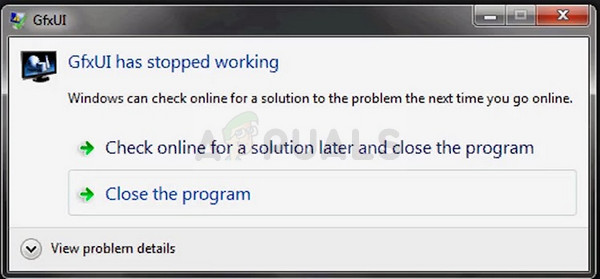
It often appears quite randomly without giving users much information regarding the problem. That is why there have been many problems in resolving the error properly. Many users shared their successful methods and we decided to pack them up in an article. We hope you are able to fix the problem!
What Causes GfxUI to Stop Working?
There aren’t many distinct causes for this problem and any troubleshooting process can be deducted by one of the causes which will be listed below. Knowing what caused the problem may as well help you troubleshoot it properly and save you some time from trying out solutions incompatible with your scenario. Check out the list below!
- Broken installations of Microsoft Visual C++ Redistributable and Microsoft .NET Framework are the primary cause of this problem and reinstalling them properly will resolve your issues with the probability of at least 90%.
- Old and outdated drivers are a valid cause for this problem and updating them is definitely the second step you should take when troubleshooting the problem. The problematic executable is actually a driver file for the Intel graphics adapter!
- Some third-party applications and tools can also be the culprit and you should consider uninstalling them if they are not that vital to you.
Solution 1: Reinstall Microsoft .NET Framework and Microsoft Visual C++ Redistributable
Oddly enough, certain versions of Microsoft .NET Framework and Microsoft Visual C++ Redistributable seem to cause the issue and many users have suggested that the problem was resolved after they have reinstalled these components from scratch. We suggest you do the same and start out your troubleshooting process with this method.
- Click the Start menu button and open Control Panel by searching for right there. Also, you can click on the gear-shaped icon in order to open the Settings app if your OS is Windows 10
- In Control Panel, switch the View as option to Category at the top right corner and click on Uninstall a Program under the Programs section at the bottom of the Control panel window.
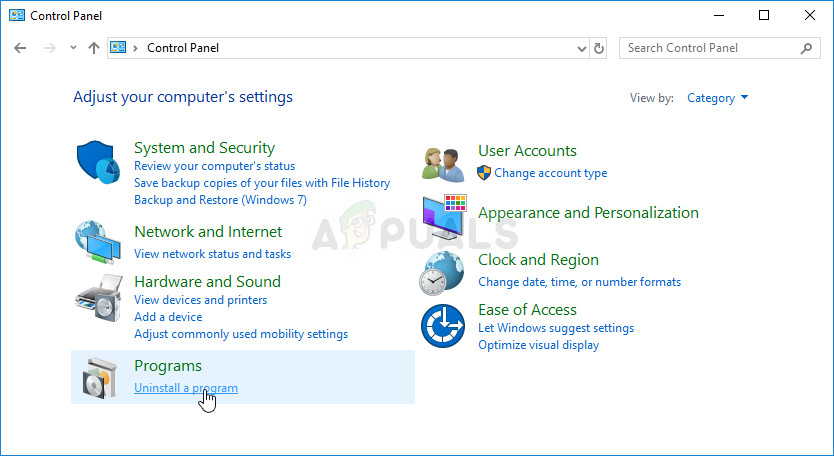
- If you are using the Settings app on Windows 10, just clicking on Apps should immediately open a list of all installed programs on your PC.
- Locate Microsoft Visual C++ Redistributable Package in Control Panel or Settings and click on Uninstall after clicking it once. You might notice that there are several different versions of the utility. You will need to make note of them and repeat the uninstalling process for each one of them. Do the same for all Microsoft .NET Framework Entries.
- You may need to confirm some dialog boxes and follow the instructions which will appear along with the uninstallation wizard.

- Click Finish when the uninstaller finishes with the process and repeat the uninstalling process for all versions of both programs.
- In the Uninstall a program window, click Turn Windows features on or off. Make sure you locate the .NET Framework entries (especially 3.5.x) and make sure you disable them.
- Now, you will need to reinstall Visual C++ by downloading it here. Reinstall .NET Framework by downloading it here. Select the version you want to download and choose the download according to your processor (32-bit or 64-bit).
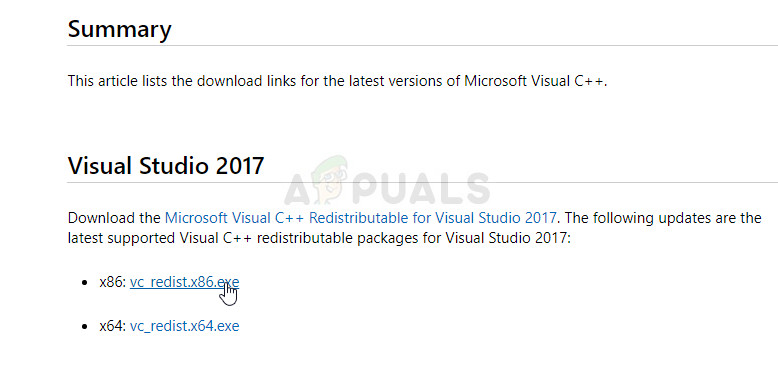
- Locate the files you just downloaded in the Windows folder, run them, and follow the instructions on-screen in order to install the Microsoft Visual C++ Redistributable Package and .NET Framework. Navigate back to Turn Windows features on or off and re-enable Microsoft .NET Framework 3.5.x. Check to see if the problem still appears!

Solution 2: Update Your Graphics Card Driver
This is generally the best thing you can do in order to resolve such a problem occurring with GfxUI. Graphics card drivers are the main channel of communication between the computer and the graphics card and it’s important to have the latest drivers installed. Make sure you do so by following the instructions below!
- Click the Start menu button, type in “Device Manager” afterward, and select it from the list of available results by simply clicking the first one. You can also tap the Windows Key + R key combo in order to bring up the Run dialog box. Type in “devmgmt.msc” in the dialog box and click OK in order to run it.

- Since it’s the video card driver you want to update on your computer, expand the Display adapters section, right click on your graphics card and choose the Uninstall Device
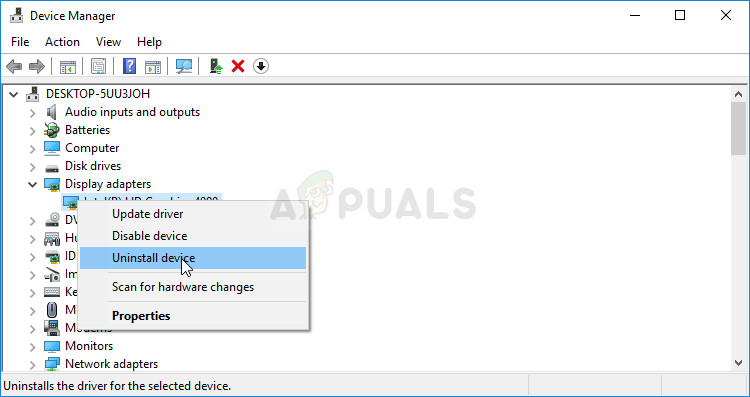
- Confirm any dialogues or prompts which may ask you to confirm the uninstallation of the current graphics device driver and wait for the process to complete.
- Look for your graphics card driver on Intel’s site. Search by selecting the generation of your Intel processor.
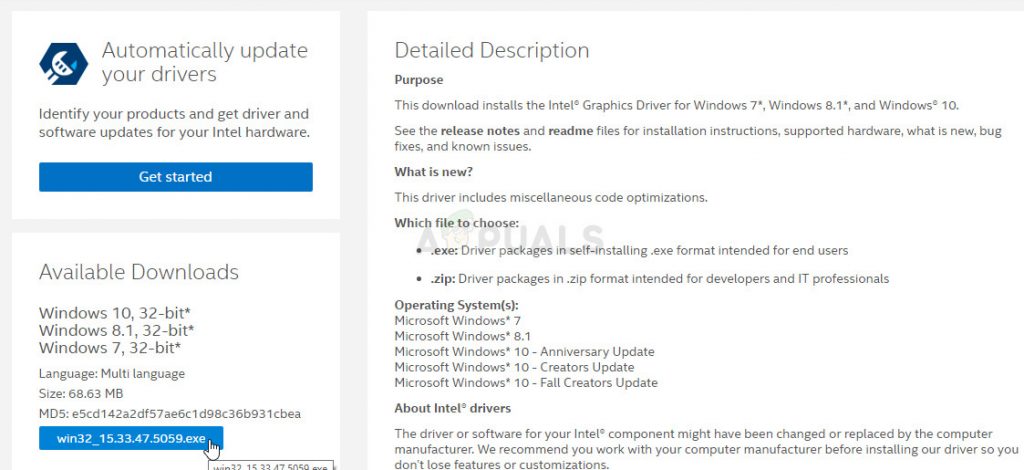
- A list of all available drivers should appear. Make sure select the most recent entry, click on its name and select one of the Available Downloads from the left pane. Save it to your computer, open it, and follow the instructions on-screen in order to install it. Check to see if the “GfxUI has stopped working” error still appears!
Alternative: If you will uneasy downloading the drivers manually, you should also try to simply update it by using the built-in feature by Windows which will search for new drivers and update them manually.
- Go back to the Device Manager window and expand the Display adapters Right-click on your graphics card in the list and choose Update driver from the context menu.
- Choose the Search automatically for updated driver software option from the new window and wait to see if the utility is able to find newer drivers.
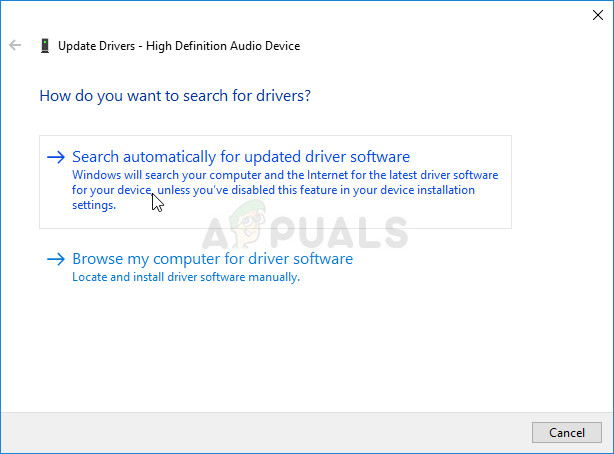
- Check to see if the problem still persists!
Solution 3: Uninstall LogMeIn
LogMeIn is a remote desktop tool and it allows users to connect to other people’s computers. It can be useful for many reasons and it’s generally a legit, popular tool for the purpose. However, if you have it installed on your computer and if you receive the “GfxUI has stopped working” error message, it might be possible that this tool is to blame.
- Click on the Start menu button and open Control Panel by searching for it or by locating it in the Start menu (Windows 7 users). Alternatively, you can click on the gear icon in order to open the Settings app if you are using Windows 10 as the operating system on your computer.
- In the Control Panel window, switch to View as: Category at the top right corner and click on Uninstall a Program under the Programs section.

- If you are using the Settings on Windows 10, clicking on Apps section from the Settings window should open the list of all installed programs on your computer.
- Locate LogMeIn in the list either in Settings or Control Panel, click on it once and click the Uninstall button located in the Uninstall a program window. Confirm any dialog choices to uninstall the tool, and follow the instructions which will appear on the screen.




